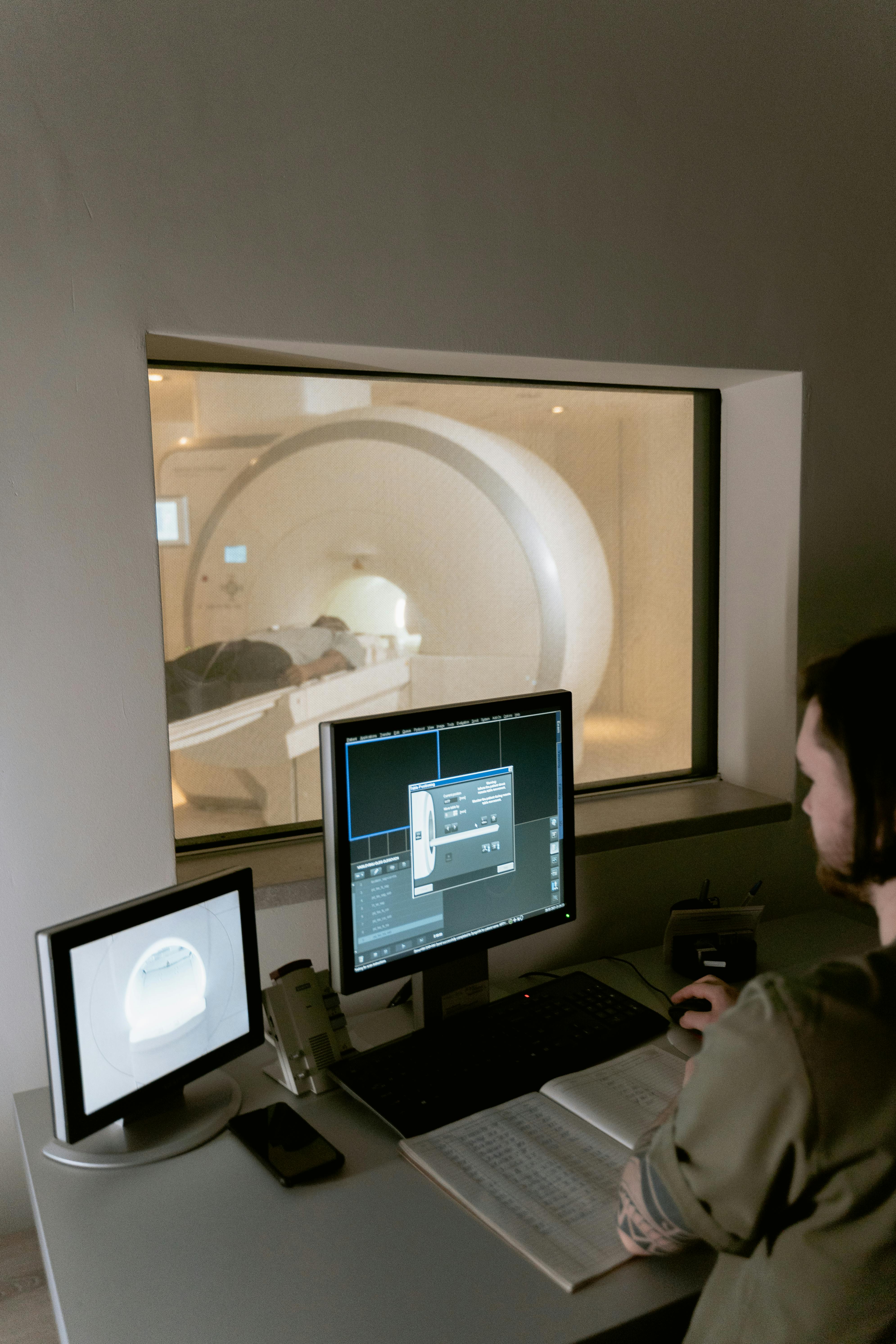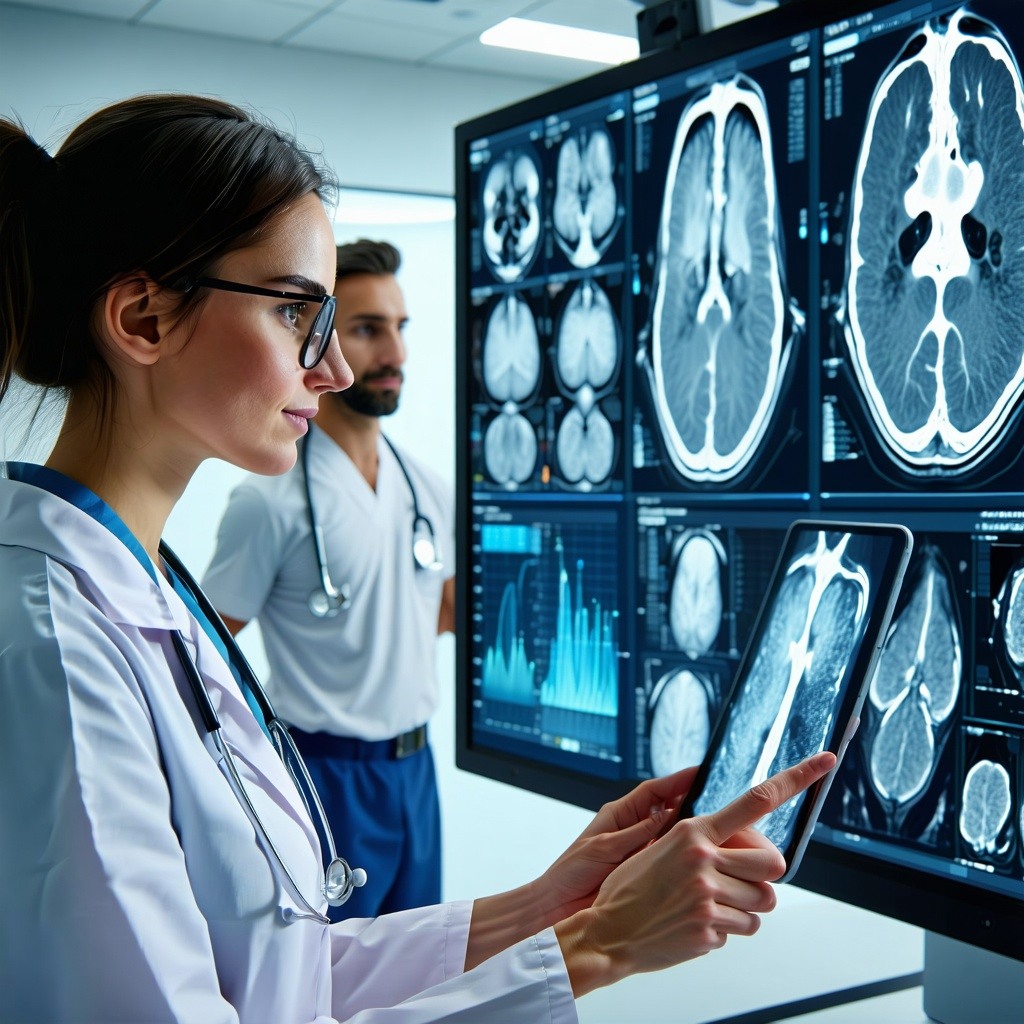Can We Trust AI-Generated Radiology Reports?
In 2023, radiologists worldwide analyzed over 3.6 billion medical images. By 2026, AI is projected to assist in interpreting more than 40 percent of all radiological studies. This isn’t just a technological shift—it’s a fundamental transformation in how we diagnose disease and save lives.
Recent research revealed that AI-augmented radiologists detected 94 percent of malignancies compared to 86 percent by radiologists working alone, while simultaneously reducing false positives by 37 percent. In emergency settings, AI-assisted stroke diagnosis has cut interpretation time from 30 minutes to under 6 minutes—a difference that can literally determine whether a patient walks out of the hospital or requires lifelong care.
Yet, despite these promising statistics, a critical question remains: Can we trust AI-generated radiology reports? As these systems increasingly influence life-or-death decisions, establishing genuine trust isn’t merely desirable—it's essential. And the path to that trust is neither simple nor guaranteed.
This exploration delves into the promise, challenges, and potential of AI in radiology—and reveals how innovators like Care.IO are creating the foundation for a future where AI doesn’t replace radiologists but empowers them to provide unprecedented levels of diagnostic accuracy and patient care.
The Promise of AI in Radiology
The potential benefits of AI in radiology are substantial and well-documented. Research has demonstrated impressive efficiency gains, with AI-assisted processes reducing reading times for radiologists from 34.2 seconds to 19.8 seconds per case. This productivity enhancement enables specialists to focus their expertise on complex cases that require nuanced human judgment.
Beyond speed, AI has demonstrated remarkable improvements in accuracy. Recent studies indicate that AI models improved sensitivity in identifying mediastinal silhouettes from 84.3 percent to 90.8 percent and enhanced detection of pleural lesions from 77.7 percent to 87.4 percent. These aren’t merely statistical improvements—they represent earlier diagnoses and potentially better outcomes for real patients.
The economic impact of AI integration is equally compelling. By automating routine tasks, healthcare systems can reduce operational costs while making advanced diagnostics more accessible, particularly in underserved or resource-constrained environments where radiologist shortages are acute.
Current Challenges and Limitations
Despite its promise, AI-generated radiology reports face significant challenges that must be addressed:
Clinical Accuracy and Contextual Understanding
While AI excels at pattern recognition, it sometimes struggles with clinical nuances that experienced radiologists intuitively recognize. Subtle anomalies, rare conditions, or contextual factors may be overlooked by even sophisticated AI systems. This highlights the ongoing need for human oversight in interpreting AI-generated findings.
Quality Control Imperatives
Ensuring reliable AI performance requires robust quality control mechanisms. Frameworks such as Auxiliary Auditing Components (ACs) are being developed specifically to evaluate and refine AI performance in clinical settings. These systems provide crucial safeguards against algorithmic errors that could impact patient care.
Ethical Considerations
Training data bias remains a persistent concern in AI development. Models trained primarily in specific demographic groups may perform inconsistently across diverse patient populations. Additionally, questions of accountability—who bears responsibility when AI systems contribute to diagnostic errors—remain incompletely resolved from both ethical and legal perspectives.
Statistical Evidence Supporting AI in Radiology
The effectiveness of AI in radiology has been validated through rigorous research. In breast cancer detection, for example, AI integration reduced false positives by 5.7 percent and false negatives by 9.4 percent compared to traditional approaches. These improvements translate directly to fewer unnecessary procedures and fewer missed diagnoses.
AI’s rapid data processing capabilities prove particularly valuable in emergency settings where time constraints are critical. During acute stroke evaluation, AI tools can analyze imaging studies in minutes rather than hours, potentially expanding the window for life-saving interventions.
A 2023 study published in Radiology found that AI assistance improved radiologists’ diagnostic accuracy for pulmonary embolism by 13 percent while reducing interpretation time by 30 percent. This demonstrates AI’s potential to enhance both quality and efficiency—the ideal combination in healthcare delivery.
Essential Dimensions for Building Trust
To establish genuine trust in AI-generated radiology reports, focused efforts across three key dimensions are essential:
Transparency
AI developers must document how algorithms make decisions, ensuring that radiologists understand the reasoning behind AI-generated conclusions. This includes clear communication about the training data used, the model’s limitations, and situations where human override is recommended.
According to the American College of Radiology Data Science Institute, ‘Transparency in AI algorithms is not merely a technical preference but a clinical necessity. Radiologists cannot responsibly use tools they don’t understand.’
Several leading AI developers now provide ‘confidence scores’ with their outputs, explicitly indicating the algorithm’s certainty level for specific findings. This transparency helps radiologists appropriately weigh AI input within their broader clinical assessment.
Rigorous Validation
Before clinical deployment, AI systems require extensive validation against gold-standard human interpretations. This validation should occur across diverse patient populations, imaging equipment types, and clinical scenarios to ensure consistent performance.
The FDA has recognized this need, developing a proposed regulatory framework specifically for AI/ML-based Software as a Medical Device (SaMD). This framework emphasizes the importance of real-world performance monitoring and establishing predetermined change control plans for continuously learning systems.
Regulatory Oversight
Comprehensive regulatory frameworks are necessary to ensure the safety, effectiveness, and ethical implementation of AI in radiology. Organizations, including the FDA, European Medicines Agency, and international radiology societies, are working to establish these guardrails.
The International Medical Device Regulators Forum (IMDRF) has published guidance specifically addressing AI-based medical devices, emphasizing risk management throughout the product lifecycle. These efforts acknowledge that traditional regulatory approaches may need adaptation for continuously evolving AI systems.
Care.IO’s Role in Building Trust
Care.IO stands at the forefront of building trust in AI-generated radiology reports through several innovative approaches:
Data Aggregation and Standardization
Care.IO’s platform focuses on healthcare data aggregation, combining diverse data sources, including electronic health records, diagnostic images, and treatment plans, into a unified view. By eliminating data silos, Care.IO ensures that AI systems have access to comprehensive, contextualized information—a prerequisite for accurate analysis.
The company’s standardization processes normalize data across different sources, addressing a fundamental challenge in healthcare AI: inconsistent data formats and terminology. This standardization enhances the reliability of AI-generated insights by ensuring that algorithms receive consistent, high-quality inputs.
Interoperability Solutions
Care.IO prioritizes seamless integration with existing radiology workflows, recognizing that even the most advanced AI tools provide limited value if they disrupt established clinical processes. Their interoperability solutions enable radiologists to incorporate AI insights without workflow disruption.
The platform’s collaborative features facilitate effective human-AI partnerships, allowing radiologists to review, annotate, and provide feedback on AI findings. This bidirectional communication not only improves immediate patient care but also contributes to ongoing AI refinement.
Data Security and Analytics
In healthcare, trust inherently depends on data security. Care.IO implements robust encryption and compliance measures that meet or exceed industry standards, protecting sensitive patient information while enabling powerful analytics.
Their advanced analytics capabilities transform aggregated data into actionable insights, empowering radiologists to make evidence-based decisions with confidence. By contextualizing AI findings within broader clinical patterns, Care.IO helps radiologists understand when to rely on AI suggestions and when to exercise additional scrutiny.
The Future: Human-AI Collaboration
The most promising future for radiology involves effective collaboration between skilled radiologists and sophisticated AI systems. Rather than replacement, AI augmentation allows radiologists to focus on complex interpretations, patient consultations, and interdisciplinary collaboration—areas where human expertise remains irreplaceable.
As this partnership evolves, radiologist training will increasingly incorporate AI literacy, preparing new specialists to work effectively with these tools. Forward-thinking radiology programs have already begun integrating AI education into their curricula, recognizing this as an essential competency for future practitioners.
Care.IO’s visionary approaches to data aggregation, interoperability, and security represent significant contributions to this trust-building process. By addressing fundamental challenges in healthcare data management, Care.IO is helping create the foundation for responsible AI adoption in radiology.
The path forward involves thoughtful collaboration between technology developers, healthcare providers, regulatory bodies, and patients themselves. Through this collective effort, AI can become what it should be in radiology: not a replacement for human expertise, but a powerful tool that enhances diagnostic capabilities and ultimately improves patient outcomes.
Take the first step today. Schedule a consultation with Care.IO (https://care.io/) to learn how their data aggregation, interoperability, and security solutions can help your organization build trust in AI-generated radiology reports.



